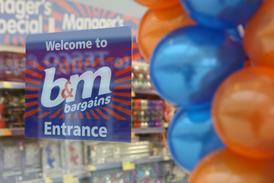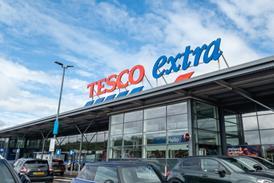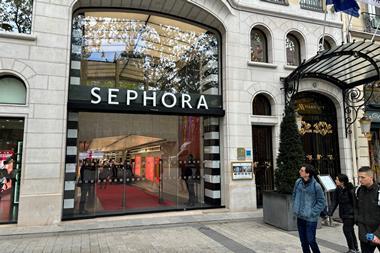- UK Retail sales excluding VAT -£7.03 billion, down 1.7 per cent from£7.15 billion last year.
- Group profit before tax and exceptional items -£618.5 million, down 19 per cent from£763.2 million last year.
- UK retail operating costs before exceptional items up 0.1 per cent.
- UK like-for-like sales down 5.1 per cent.
- Clothing sales down 3.1 per cent on last year, with a reduction in clothing market share 0.5 percentage points to 10.5 per cent.
- Food sales up 2.4 per cent on last year, but down 2.6 per cent on a like-for-like basis.
- Group capital expenditure£220 million, down from£424 million. Capital expenditure for this year is expected to be£350 million.
Marks & Spencer's preliminary report ending April 2, which shows profits down by a fifth, will leave shareholders and pundits pondering whether chief executive Stuart Rose is still in control of the company's turnaround or whether he's fired all of his guns and there is little more that he can do that he hasn't already done.
Be patient
His message to shareholders is that they must be more patient and not expect any signs of recovery to come soon. Not quite in the role for 12 months, Rose has already forced the retailer to undergo some far-reaching changes.
Almost as soon as he joined the company, he re-engineered his board of directors, with the departure of some high-profile executives, including Luc Vandevelde, Vittorio Radice and Yasmin Yussuf.
Cutting costs
Rose cut the retailer's ongoing initiatives from 31 to 10, and shut the innovative, but essentially flawed, Lifestore. At the same time, he urged a refocusing of the retailer's energies back into core values, under the banner of Your M&S.
The retailer's financial services arm was sold for£769 million net of costs and the George Davies womenswear range Per Una was bought for£125.9 million.
Underpinning this was a raft of initiatives to cut costs, including slashing more than 650 head office jobs, reduced stocks and commitment worth£1.3 billion and renegotiated supplier terms.
Better buying
In customer terms, the M&S's ranges have been reduced by 17 per cent and it has reorganised its buying and delivery processes. Buying has become more straightforward and transparent, so that it is less of a black art within the business.
Sourcing has been reorganised and regional sourcing directors have been appointed to oversee a single approach to direct buying across the business.
Rose has pledged to deliver cost and margin savings of£250 million by the end of the financial year and£320 million by the end of the next financial year.
Store revamp
Finally, he has more recently announced changes to the store portfolio. M&S is understood to be planning a store refurbishment of selected key destinations costing£300 million. However, Rose admitted that a comprehensive store refit programme would cost the retailer at least three times that amount.
M&S is also experimenting with locations outside its traditional heartland, in a trial of eight BP forecourt sites and 10 locations at out-of-town retail parks in an effort to expand retail space.
No quick fixes
Rose has warned that there are no quick fixes and warned shareholders that more needs to be done to improve the M&S's offer this year, before the retailer is able to, in his words, 'broaden its horizons'.
For the moment, analysts appear to be content to let Rose play his hand, agreeing that they don't expect the business to be turned around in the next 12 months.
Investec analyst Matthew McEachran said he did not expect the M&S's like-for-like clothing sales to have got any worse in recent trading, but remained nervous about M&S's ability to reverse its sales declines this financial year, even if costs and gross margin are on a stronger footing.
Evolution analyst Nick Bubb said that the results held no big surprises. He said: 'Stuart Rose clearly thinks that by cutting stock mark-downs by£100m that he can get profits moving up in 2005/2006, but he was very confident about the outlook last July and, given how poorly things have turned out so far, he has lost credibility. If profits fail to recover in 2005/2006 then we will know that the problems of M&S were deeply structural.'
























No comments yet